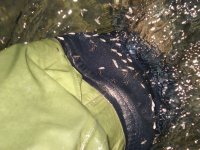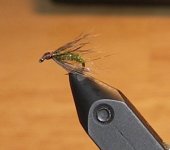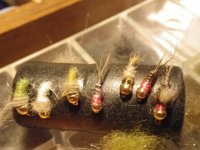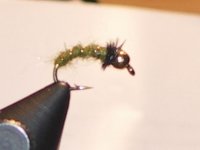flipnfly
Active member
- Joined
- Feb 6, 2009
- Messages
- 1,132
ok this is one thing that im totally in the blind about and need to fix since caddis are a food staple to trout .
my questions are
1. are the larvae patters the same size as the dry
2. are the larvae the same colors as the dry?
so if im fishing where there are lil black caddis hatch is the larva going to be a size 16 or 18 black larvae? this is what im confused about and i know im making this harder than it is .....
or are all caddis larvae green?
your help will go a long way
my questions are
1. are the larvae patters the same size as the dry
2. are the larvae the same colors as the dry?
so if im fishing where there are lil black caddis hatch is the larva going to be a size 16 or 18 black larvae? this is what im confused about and i know im making this harder than it is .....
or are all caddis larvae green?
your help will go a long way







